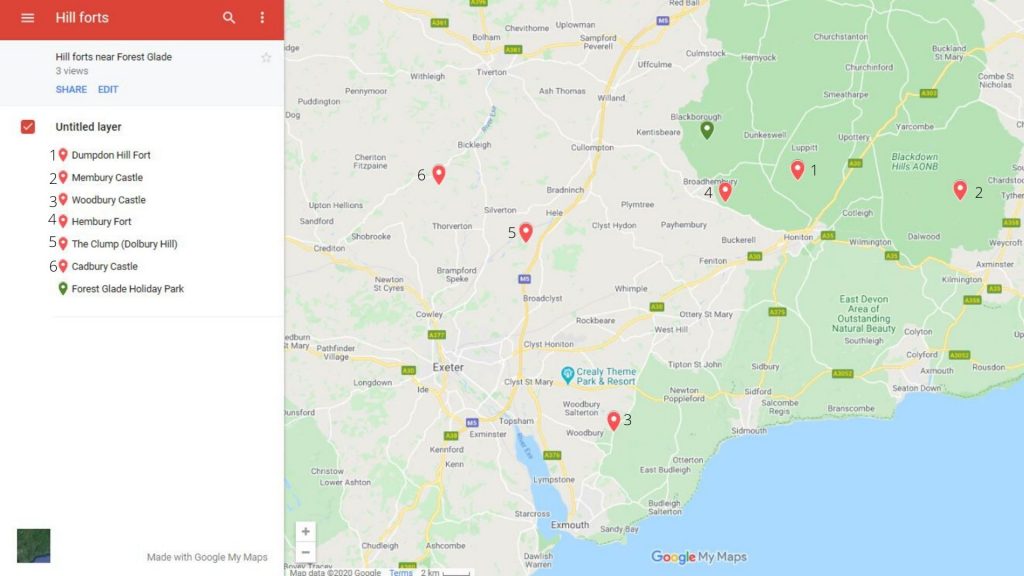Historic Hill Forts
Once you start exploring Devon, one thing you might notice is just how many hill forts we have!
This article was written on 27 May 2020
and is a 4 minute read
A hill fort describes an area that was built as a defensive settlement, or fortified refuge. They tend to have wonderful views, so it’s often worth that walk up a big hill to get to the top! Our blog this month looks at some of the forts which are most easily accessible from Forest Glade, but there are dozens more if you investigate further afield.
Hembury Fort
Hembury Fort at Payhembury is described by the Blackdown Hills AONB website as “the finest prehistoric hill fort in Devon”. Evidence of both Iron Age and Roman occupation have been found here. The massive ramparts have, over time, become undulating woodland surrounding the fort and are fantastic for kids and dogs to explore. It’s a short walk through the woods to the top of the fort, with super views across to the sea at Sidmouth as well as Dartmoor on a fine day.
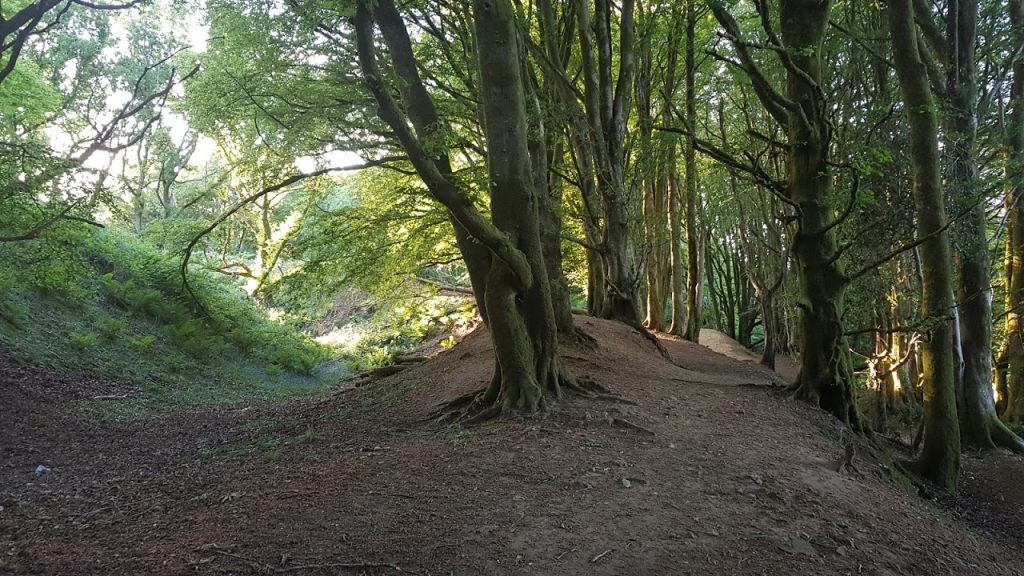
Dumpdon Hill
Just a stone’s throw away from Hembury Fort is the slightly less well-known, but still very distinctive Dumpdon Hill. These earthworks, with a clump of trees on the top, overlook the Otter Valley and are maintained by the National Trust. https://www.nationaltrust.org.uk/shute-barton/features/dumpdon-hill-fort
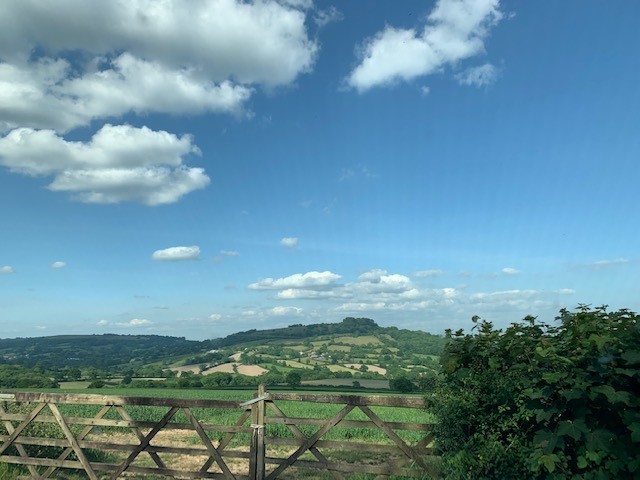
Stockland Castle
Stockland Castle near Honiton is actually two historic sites: Stockland Great Castle and Stockland Little Castle. This 20 mile cycle route takes you past both Dumpdon and Stockland: https://blackdownhillsaonb.org.uk/walks-and-rides/honiton-stockland-and-upottery/
Membury Castle
Membury Castle, near Axminster, is a single rampart castle. The convex centre is covered with grass, whilst trees line the rampart. When the trees are not fully in leaf, the castle has views over the Yarty and Axe Valleys. Membury Castle makes a quick and interesting detour on the way to or from a day out in Axminster or Lyme Regis.
Woodbury Castle
Woodbury Castle is an iron age hill fort which is within the East Devon AONB. Now partly covered with a beech wood, the castle itself is a great place to play. You can sometimes find rope swings dangling over the ramparts. It is part of Woodbury Common, which is an open area of heathland popular with walkers and mountain bikers. Walk from the castle and out on the common for wonderful views out towards the Exe Estuary and the sea. It’s worth taking a picnic and spending a bit of time exploring. The military still occasionally use this area for training, so look out for the red flags to warn you of firing days.
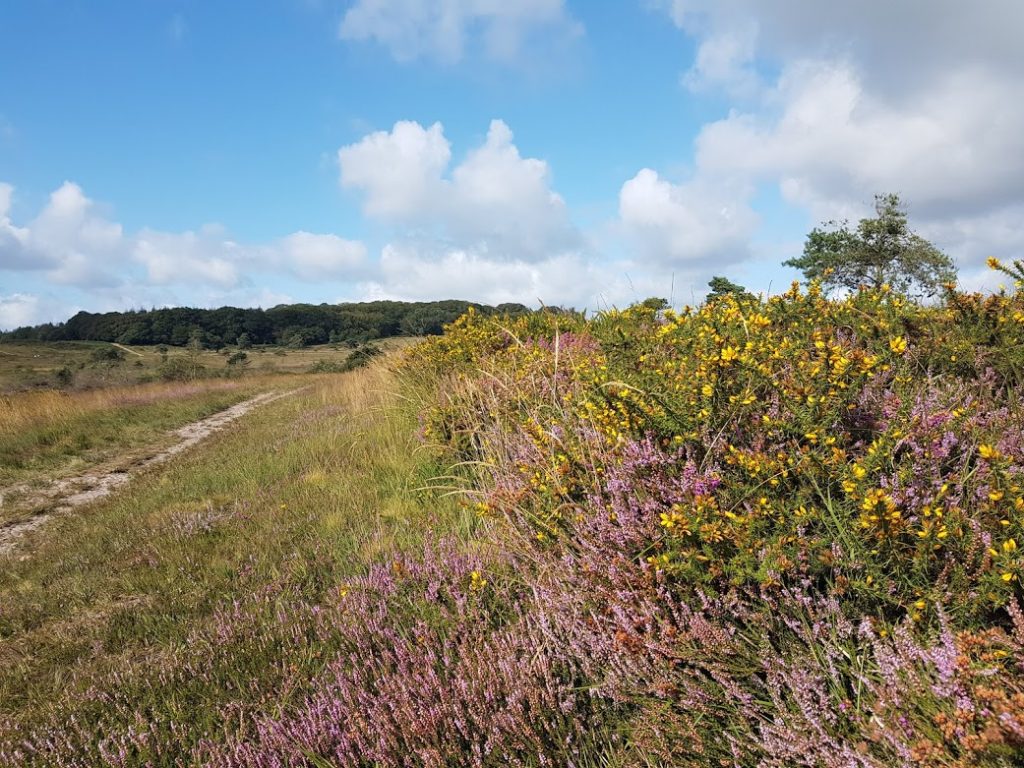
Blackbury Camp
Blackbury Camp was built in the 4th Century BC. The English Heritage website explains that it was used by an Iron Age tribal people, probably for several hundred years. Blackbury Camp is particularly popular in May of each year, when the ground is a carpet of bluebells and the woody scent is intoxicating. A super place to introduce children to ancient history and perhaps enjoy a picnic amongst the bluebells.
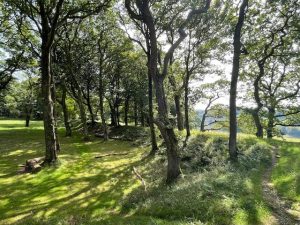
Dolbury Hill
If you’re visiting the National Trust’s Killerton estate, take a walk up to ‘the Clump’, also known as Dolbury Hill. This is an extinct volcano with views across the Exe Valley. It is one of the most impressive hill forts in Devon. It has since been planted with trees, but is thought to date from around 600 BC
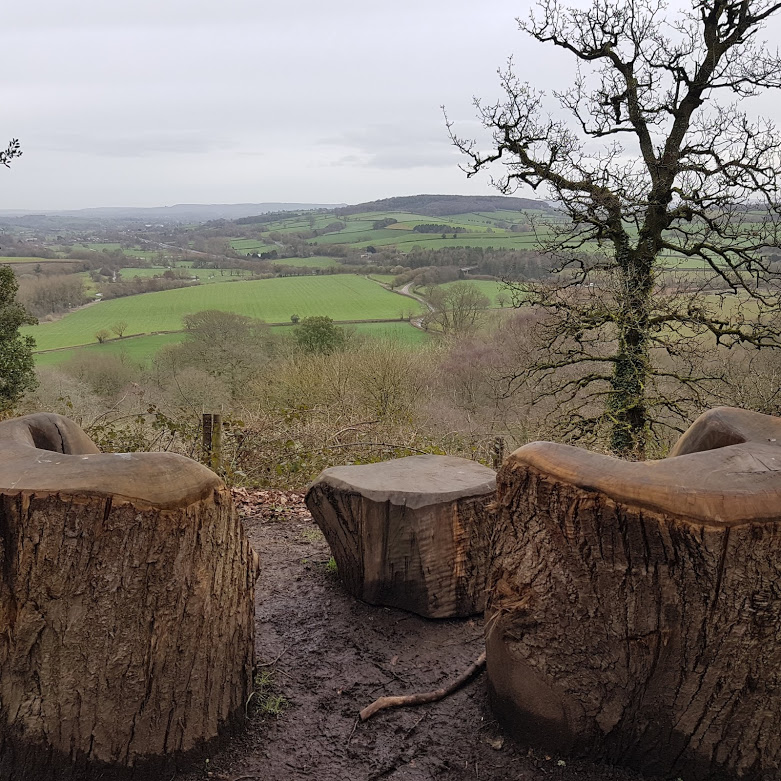
Cadbury Castle
Cadbury Castle, near Bickleigh has been linked throughout history with various mysteries and legends, some hinting at a link with King Arthur. The views at Cadbury Castle are breath-taking; you can see for miles. It is said that the “Cadbury Dragon” used to fly between Dolbury Hill at Killerton and Cadbury Castle hill. He would have had a fairly clear flightpath! There’s plenty of fascinating information about the myths surrounding Cadbury Castle on this website.
If you find a hill fort locally that you think we should be recommending to our guests, don’t forget to drop us a line: [email protected].
